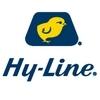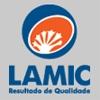Explore all the information on
Mycotoxins in poultry
Common mycotoxins associated with mycotoxicoses in poultry include aflatoxins, fumonisins, zearalenone, ochratoxins, and trichothecenes such as deoxynivalenol and T-2 toxins. Diagnosis requires detection and quantification of the specific mycotoxin. Treatment includes removal of the source of the mycotoxin and supportive care. Mold mitigation strategies can be used for prevention. Mycotoxicoses are diseases caused by the poisonous effects of the toxins produced by filamentous microfungi (ie, toxigenic molds). Hundreds of mycotoxins are known and can produce mild to severe toxic effects when they occur above levels of concern. The importance of mycotoxin problems in poultry is probably considerable yet difficult to measure. Chronic low levels of exposure to more than one type of mycotoxin appears to be a commonality, yet is less clinically evident.
Dr. Sandeep Dwivedi, Manager - Technical Services at EW Nutrition India, shares insights into how EW Nutrition addresses these challenges. Using advanced risk assessment tools and mitigation programs, they help farmers protect flocks, boost immunity, and improve profitability....
Comments : 0
Recommendations: 0
Swamy Haladi (Trouw Nutrition) discusses the critical impact of mycotoxins on gut health and food safety at OVUM 2024. Learn how toxins like DON and Fumonisins compromise gut barriers, enabling pathogens to affect poultry performance and product quality. Swami also shares holistic strategies for managing mycotoxins, from grain storage to advanced binders...
Comments : 0
Recommendations: 0
1. Introduction Corn ranks among the most globally cultivated cereals, with the production of more than 1200 million tons in the 2022/2023 harvest, mainly concentrated in the United States, China, and Brazil [1]. In Brazil, corn is the second most produced grain, following soybeans. For the 2023/2024 harvest, the estimated production in Brazil will exceed 118 million tons [2]. In the Brazilian market, the diversity of corn cultivars is substantial, whereby 98, 259, and 98...
Comments : 0
Recommendations: 1
Mycotoxins are produced by fungi and can lead to sickness in humans and animals, which explains why testing for them in crops, feeds, and food products is so important and is often a regulatory and customer requirement. Fortunately, testing technologies have evolved from slow, tedious, and complicated to smart, fast, and data connected. Tests vary in their performance capabilities and suitability for field, process, or lab environments. With a number of different options, you may be...
Comments : 1
Recommendations: 0
Introduction Mycotoxins are secondary metabolites in certain molds that grow in raw material feed or commercial feed [1]. Mycotoxins have been reported to cause economic loss, disease in livestock and humans, and even death [2]. Five mycotoxins, aflatoxin, fumonisin, ochratoxin, trichothecene and zearalenone, have been reported to be dangerous to the body. Aflatoxins and ochratoxins are examples of mycotoxins whose toxicity levels are higher than others [3]. Aflatoxins and...
Comments : 0
Recommendations: 0
INTRODUCTION Aflatoxin Testing in Changing Times: The Context at a Glance As toxic contaminants of very high concern, aflatoxins stand out as a key area of focus in today’s food safety testing arena. The issues surrounding the rising importance of accurate, defensible aflatoxin test results are numerous and complex. Chief among them are a growing public awareness of the health and economic implications of foodborne toxins, the increasing globalization of the...
Comments : 0
Recommendations: 0


Prices Hold, Pressures Build: What’s Moving the Veterinary API Market
Suggested link
INTRODUCTION A Rising Call To Action As government-mandated and industry-driven hazard identification and prevention efforts become standard operating procedure for an expanding cross-section of the global feed industry, the need of its diverse stakeholders for fast, easy, cost-effective access to reliable aflatoxin data continues to intensify. Recognition of aflatoxins as a chemical hazard of very high concern spans the gamut of national and international...
Comments : 0
Recommendations: 0
I. INTRODUCTION Mycotoxins are secondary metabolites produced by fungi (fusarium, aspergillus, penicillium mainly) that can cause serious health problems in poultry and may result in severe economic losses. They can exert negative impact on both performance (Kolawole et al, 2020) and intestinal health (Antonissen et al, 2014) depending on the type of mycotoxin, extent of exposure, its concentration, the age of the animals and their health status. Mycotoxins can also be a predisposing...
Comments : 0
Recommendations: 1
Mycotoxins in food tend to occur when specific molds and environmental conditions coexist. To ensure your operation is set up for success, testing should take place as early as possible. “Testing throughout the entirety of the supply chain—from farm to factory to finished foods—is critical because of the insidious...
Comments : 0
Recommendations: 0
Mycotoxin tests are tools, and like any tool, you need the one that fits your goals. Sometimes tests aim to be sensitive and compliant, others fast and simple. One common way to categorize types of mycotoxin tests is differentiating regular versus rapid testing. What Is a Regular Test? Regular tests are...
Comments : 0
Recommendations: 0
Tony Mcdougal, a freelance journalist, once wrote in Poultry World, "The rising demand for eggs, meat, and milk in recent decades has driven higher EU imports of grains and cereals from developing countries with more tropical climates, where the occurrence of mycotoxins is higher—thus raising the prevalence of mycotoxins in EU...
Comments : 0
Recommendations: 1
In the realm of food safety, mycotoxins present a significant challenge to manufacturers, processors, and regulatory bodies alike. These toxic compounds, produced by certain fungi under specific environmental conditions, can contaminate various food and feed products, posing serious health risks to consumers and...
Comments : 0
Recommendations: 2
In 2023 mycotoxins semiannual survey, Life Rainbow Biotech randomly collected 152 feed samples of raw materials and feed mills in farms and analyzed. The samples were tested for aflatoxins (B1, B2, G1, and G2), zearalenone, fumonisins (B1, B2, and B3), and deoxynivalenol (DON) by the ELISA Mycotoxin analysis kit. Contamination in animal feed 152 feed samples collected, and 77% were contaminated with fumonisins ( table 1 ). The maximum concentrations of aflatoxins,...
Comments : 0
Recommendations: 1
Mycotoxins are a major problem in the poultry industry causing significant negative effects on animal health, productivity, and the economics of production. Binders such as bentonites are typically added to poultry diets to adsorb mycotoxins in the gastrointestinal tract and protect the birds against the harmful effects of mycotoxins. Bentonites are effective in preventing aflatoxicosis, however, their activity against zearalenone, ochratoxin, and trichothecenes is limited (Bhatti et al.,...
Comments : 0
Recommendations: 0
Mycotoxins are secondary metabolites produced by fungi, the most abundant of which belong to the genera Aspergillus, Penicillium, and Fusarium . The conditions required for fungal development and the production of mycotoxins vary strongly with the substrate on which the fungal species develop.Because mycotoxins are mainly present in food and feed, the gut is the first target for mycotoxin toxicity, but it is also the site of the absorption of mycotoxins that leads to...
Comments : 0
Recommendations: 1
Deependra Paneru (University of Georgia) speaks on how mycotoxins in the feed impact growth performance and impair the recovery of the pullets infected with coccidiosis, in this Engormix interview during IPPE 2024 in Atlanta, USA....
Comments : 0
Recommendations: 0
Deependra Paneru (University of Georgia) An experiment was conducted to investigate the effects of subclinical mycotoxin exposure on the growth performance and immune cell dynamics in pullets exposed to coccidiosis. Using a 2x2 factorial design, a total of 288 four-week-old Hy-Line W36 pullets were randomly allocated to four treatment groups, each containing six replicated cages with 12 birds. The experimental groups were exposed to either...
Comments : 0
Recommendations: 1
Join Carlton Skipper, SE Sales Representative, as he introduces Fumo-V™ ONE, the groundbreaking solution for measuring fumonisin levels in complete feed and pet food formulations. ...
Comments : 0
Recommendations: 0
Discover how Fumo-V™ ONE, the latest innovation in feed testing technology, simplifies both on-site and lab-based analysis of complex finished feed. Haer what Carlton Skipper, SE Sales Representative at VICAM, has to say about it...
Comments : 0
Recommendations: 0


.jpg&w=3840&q=75)





.jpg&w=3840&q=75)











.jpg&w=3840&q=75)






